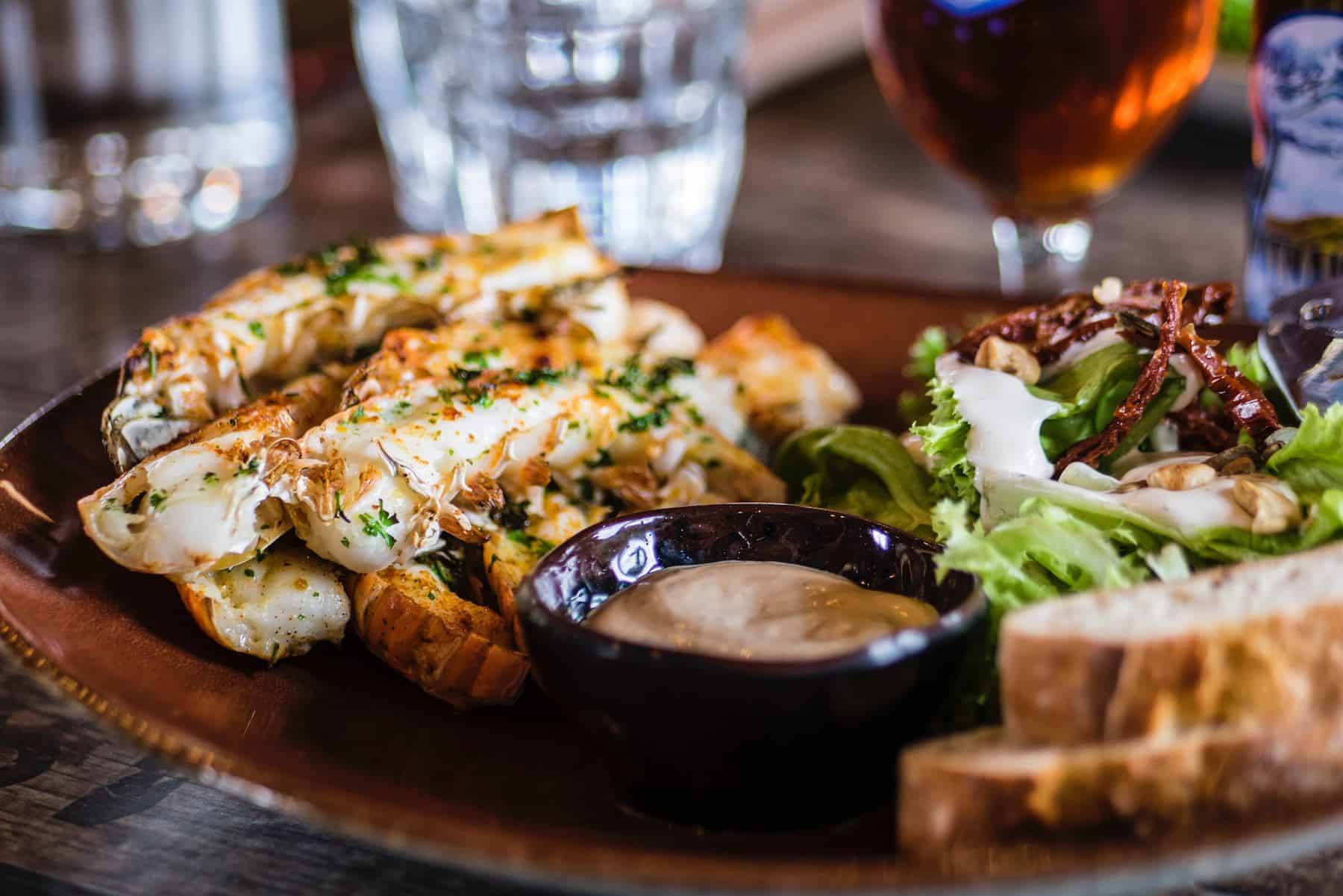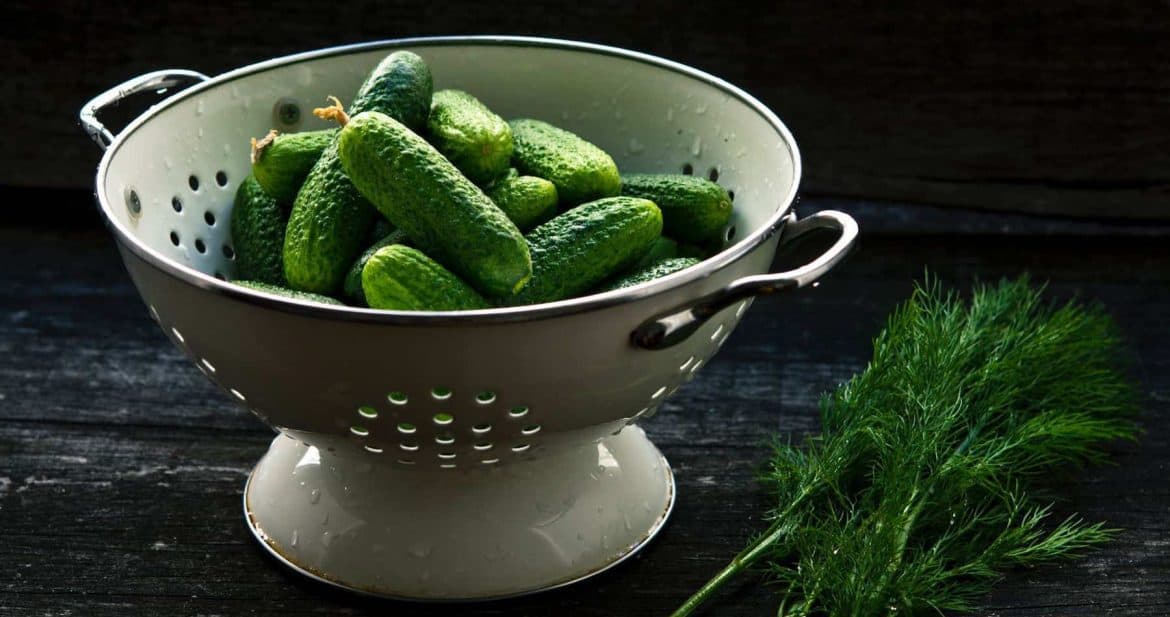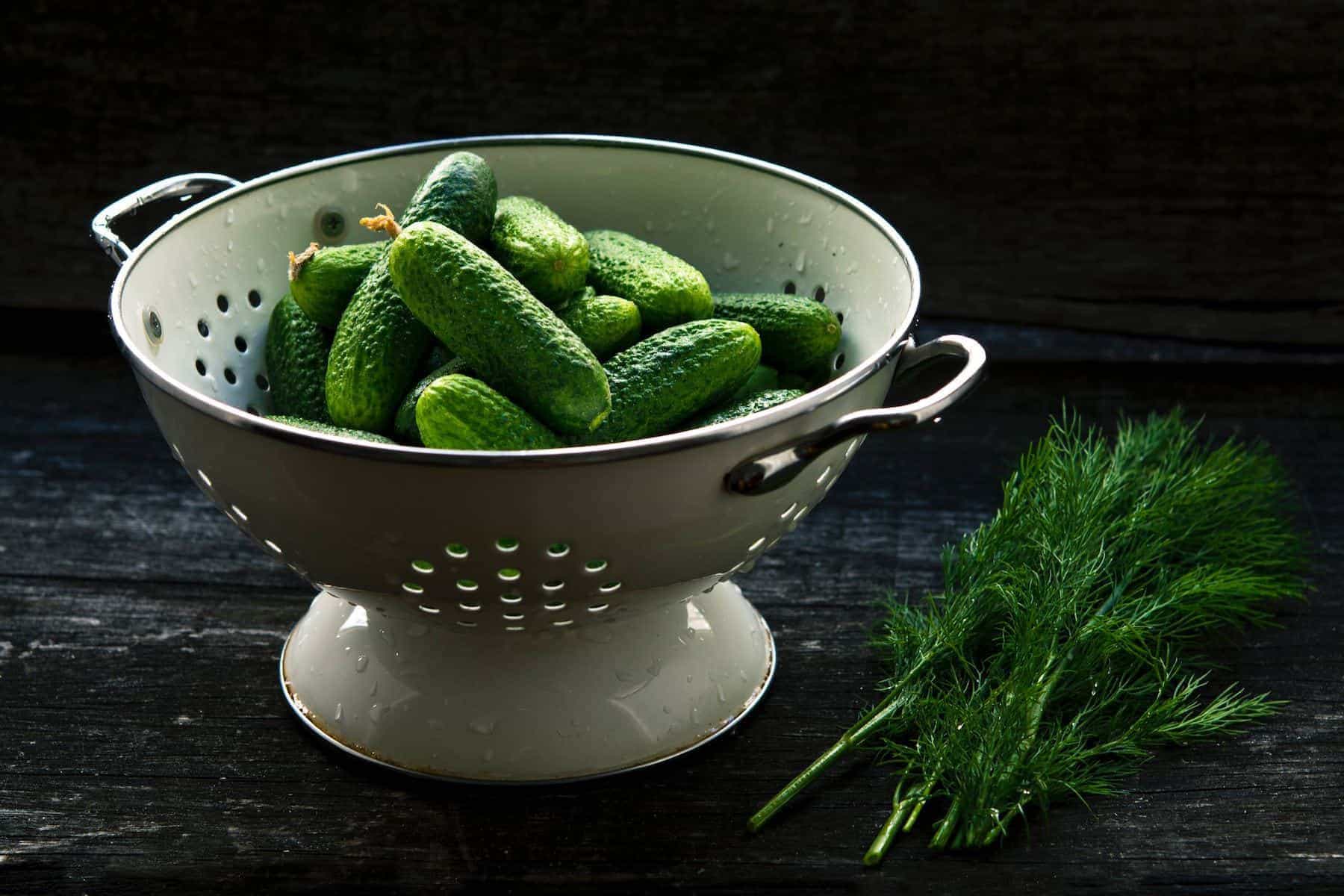Today’s post is inspired by a reader question that came in from Dawn. Dawn wrote:
I recently received a gift of home canned dilly green beans. After they were eaten I couldn’t get myself to throw out the pickling liquid with dill and garlic. I blanched some cauliflower and filled the jar back up. In no time I was enjoying pickled cauliflower. Is there any reason to not reuse the pickling liquid? How many times can I reuse it?
Can you reuse pickling brine? The answer is yes, and no.
Let’s start with what you can’t do first, and why, and then move on to the zillion things you can do with your tasty leftover pickle brine.
Never Reuse Pickling Brine To Can A New Batch of Pickles
First, you cannot reuse pickling brine to make more canned pickles. By this I mean, vegetables, preserved in brine and processed in a water bath canner so they can be kept in the pantry at room temperature.
Always preserve your canned pickled vegetables with freshly made brine that’s made based on an approved recipe. Making home canned pickles with reused pickle brine is unsafe.
Here’s why. A safe brine for pickling and canning has a certain salt and vinegar percentage that ensures the vegetable – cucumbers, green beans, beets, whatever – will be properly acidulated to prevent the growth of Clostridium botulinum and other nasty microbes.
When a vegetable is pickled, the vinegar and the salt draw water out of the cells of the vegetable and, through osmotic action, the salt and acid levels stabilize between the brine and the vegetable being pickled.
In other words, the vegetables soak up some of the salt and vinegar, and the brine is diluted. This isn’t a problem when you first make canned pickles because tested brines account for the dilution that occurs when the brine interacts with the vegetables.
However, once the brine has been used to successfully pickle one batch of vegetables, it is no longer at the original salinity or acidity level that allowed it to safely can that first batch of pickles.
If you attempt to can a second batch of pickles with reused brine, you could be setting yourself up for some really bad microbial growth you do not want.
So that’s what you can’t do: never reuse pickle brine to can an additional batch of pickles.
A Safer Option To Reuse Pickling Brine
Here’s what you can do: make refrigerator pickles!
Refrigerator pickles – also called quick pickles – are just raw or lightly blanched vegetables seasoned with a soak in a flavorful brine in the fridge. They’re called quick pickles because they are so fast to make. In some cases quick pickles might soak in a brine for just an hour before you eat them, in other cases several days or even a few weeks.
Generally, you leave your fridge pickles in their brine until they taste nice and flavorful. Three days usually does the trick.
Because refrigerator pickles are not being sealed up in a jar and left at room temperature, the preservative quality of the brine and the acid and salt levels are less critical, so you can go ahead and make refrigerator pickles with tasty delicious reused brine.
But even here there are a few caveats. A dilute brine will not be as effective at preventing bacterial growth, even at cool fridge temperatures. And your fridge pickles with reused brine will not last as long as pickles made with full strength brine. Watch closely for signs of contamination, such as a murky brine, yeast or mold growth, scum on the surface of the brine, or pickles which are mushy.
What Vegetables Can You Quick Pickle?
Any vegetable that is appropriate to pickle with a full-strength brine will be fine to use for quick refrigerator pickles with leftover brine. The best candidates tend to be vegetables that will retain their shape and crispness.
Strong flavored brassicas like broccoli, collard greens and kale can become unpleasant as a pickle. Carrots, cauliflower, beets and other dense vegetables may be blanched if desired. Particularly watery vegetables like cucumbers can be pre-salted as described below.
I’m particularly fond of quick pickles of onions and daikon.
What Is The Best Way To Reuse Pickling Brine For Quick Pickles?
Is there one best way to make quick pickles with reused brine? Probably not – pickles being a subjective thing. But Cook’s Illustrated, which takes a fairly scientific approach to testing various cooking techniques, tested making quick pickles with cucumbers and reused brine two ways.
The first method was to drop fresh cucumber slices right into leftover brine and leave the slices in the brine, refrigerated, for 24 hours.
The second method was to lightly toss the cucumber slices with 1 – 1/2 teaspoons fine salt per pound of cucumbers to draw out excess water. The Cook’s Illustrated team allowed the salted cucumbers to sit in a colander and drain for an hour. They then transferred the salted cucumber slices to a jar, brought their re-used pickle brine to a boil and poured it over the salted cucumber slices. This batch was also kept in the fridge for 24 hours.
The results were far better for the second method. Cook’s Illustrated says lightly pre-salting the vegetable and boiling the brine when reusing pickle brine results in quick pickles that are “the right dense texture and deeper color, and [are] brightly flavored and well seasoned with garlic and dill from the brine.” (Source)
How Many Times Can You Reuse Pickle Brine?
I strongly advise against the “infinite pickle” approach to your brine. With every round of vegetables that you cycle through, you are further diluting the salt and acidity level of your brine. Which means every batch gets riskier in terms of bacterial growth, molds, etc.
I think it’s pretty damn safe to reuse your brine for a batch of quick pickles once. You might be able to get away with it twice, but it would depend on the moisture content of the vegetables you’re quick pickling, the starting salinity and acidity of your original brine, and whether you salt your vegetables before reusing your brine.
That’s a lot of variables, so I can’t really recommend using your brine for quick refrigerator pickles more than once. Instead, check below for ideas on how to use that flavorful brine in other ways.
A Zillion Other Ways To Use Pickle Brine
Beyond quick pickles, there are plenty of ways to use up a jar of pickle brine. Think of it as a pre-seasoned vinegar substitute that’s adaptable for use in soups, braises, dips, dressings and even drinks.
There is no limit to the ways to use leftover pickle brine in your kitchen, but here are a few ideas to get you started.

Salads, Sauces, Dips and Dressings
- Toss warm pickle brine over warm potatoes when making potato salad. The brine will season the potatoes. This works for pasta salad as well.
- Substitute pickle brine for the vinegar in almost any salad dressing. Coleslaw dressing and 1000 Island are particularly good flavor matches here.
- Add pickle brine to tartar sauce, seafood dips, or aiolis.
- Make an easy dip for veggies with mayo or yogurt, fresh dill and pickle brine.
- Add pickle brine to tuna, ham, egg or chicken salad.
- Use as a salad dressing all by itself – just toss thinly sliced cucumbers, radishes, onions or other crisp vegetables together with a little pickle brine for a snack.
- Substitute pickle brine for vinegar in barbecue sauce recipes.
- Mix with cream cheese for a dip or sandwich spread.
- Add to hummus instead of the more traditional lemon juice.
- Use pickle brine – especially from spicy pickled peppers – as the storage liquid for feta or other brined cheese.
- Use pickle brine to marinate goat cheese, soft cheese, or mozzarella rounds.
Main and Side Dishes
- Marinade chicken or pork cutlets in pickle brine overnight for extra flavor and tenderness. Finish the meat on the grill, or lightly bread it and pan-fry.
- Add pickle brine to burger or meatloaf mix for extra flavor and moisture.
- Add pickle brine to the braising liquid for meats for an easy alternative to sauerbraten.
- Use pickle brine to poach, steam or braise seafood. Dill is traditional in many seafood dishes for a reason!
- Freeze pickle brine, then pulse in a food processor until slushy. Top raw oysters with a spoonful of this cold and briny granita.
- Add pickle brine to flavor the yolks for deviled eggs.
- Make pickle soup, a traditional Eastern European dish with pickle brine, pickles, potatoes and often meat. Here’s a vegetarian version.
- Another Eastern European soup that benefits from pickle brine? Borscht.
- Toss hot beans or lentils with pickle brine to season. Add thinly sliced onion or shallot. Serve as a side dish either warm or at room temperature.
- Hard cook eggs, then peel, halve, and toss gently with pickle brine.
- Add a few tablespoons of pickle brine to Mac and Cheese.
- Use pickle brine for some of the liquid in bread for an easy, hearty dill bread.
Beverages and Booze
- Drink pickle brine straight or slightly diluted as a hydration tonic.
- Add pickle brine to V8 or tomato juice.
- Add pickle brine to a Bloody Mary or Bloody Caesar. Alternatively, freeze extra pickle brine and use these briny ice cubes in your Bloody Mary.
- Try a pickletini – a dirty martini made with pickle brine.
- Pour a pickleback – a shot of bourbon served with a shot of pickle brine. (Not my thing, but you do you.)
What do you do with your pickle brine once all the pickles have been eaten?
• • •
Want To Ask Me A Question?
It’s easy, and I love it when you give me fun things to write about! Just follow these steps to make it easier for me to answer your question:
- Send me an email with “Question for Erica” in the subject line.
- Ask your question in one or two sentences.
- Start a new paragraph and provide any additional details that are relevant to your question.
If your question has broad applicability and I can answer it, I’ll do my best to answer it in a post like this.
This question originally came to me in my recurring role as an Expert Council Member on The Survival Podcast. My Expert Council answers to productive homekeeping and food preservation questions can be found on selected Survival Podcast episodes.



I’ve done this with refrigerator cucumber salad before (cucumbers, red onion, peppers, spices) and it’s worked out great, but I definitely agree with only doing it once. I’ve really noticed a blandness to the flavor when I’ve tried a second time.
Using leftovers to add to deviled eggs sounds awesome. I’ll have to try that the next time I make them. Yum.
Lentil marinade, yes! Great idea. I love the oyster granita, too. I use pickle brine for my fried chicken and you can’t make me stooooooop!!!
My favorite thing to do with leftover brine from home canned dilly beans is make beet pickled eggs. Once the beans are gone, I toss in chopped raw beets and peeled hard cooked eggs, and leave them for a day or two. They turn out beautiful and tasty. And I definitely only get one use out of the brine at that point. Once the eggs are gone I toss the brine.
Sending you a “Question for Erica” now….
The many ideas for reusing pickle brine sound great. But shouldn’t you boil it first before reuse? I am also concerned about the use of salty pickle brine to hydrate. The bodies Sodium/Potassium pump is very complicated and upsetting it can be very dangerous. Potassium regulates the cardiac system. When people use too much salt, the Sodium level rises. As you dehydrate in the heat, or during intense exercise, the sodium is not able to be lost. This means the level concentrates in the decreased bodily fluids. Swelling of extremities, even blood pressure rises as the sodium level rises. Since the sodium can’t be shed, the balance only allows so much potassium to stay. The potassium drops. This is why dehydration is so dangerous. The low potassium can not regulate the heart so irregular beats and palpitations begin to happen. The blood thickens, becomes harder to pump, clots can form, shooting from the heart to the brain and from the heart to the lungs. Since this was discovered, MDs have been telling people not to take salt tablets or drink salty fluids. Instead of helping they increase the problem.
If you become nauseous, dizzy, headachy, or anything like that, get out of the sun and hydrate with plain water the sugar and other sweeteners in sodas and juices can make you sicker. If you can’t hold down water, have a fever, pounding headache, high blood pressure, an unstable pulse, your.heart feels like a crazed butterfly. The headache gets dramatically worse or sudden sharp chest pain happens. It is time to call EMS and go to emergency. They will draw bloodwork, start IV’s and start working to correct the problem. They stop you drinking fluids,, give meds for nausea, and start fluids in the IV. They have to be careful. Too much too fast can push you into Congestive Heart Failure, they need to be cautious with saline fluids or tissue retention will worsen. They constantly monitor the blood pressure, if it is too high you will get IV meds to try lowering the BP, to prevent a brain stroke or chance of a brain aneurysm (vessel bursts) they may also give IV medicine for the pain once the blood work is back, until then, it’s an ice bag. That’s it! Tylenol affects the blood pressure, causing an artificial drop that will mix up the picture. So no Tylenol! They do an EKG to check the heart as well as the cardiac enzymes they sent to the lab. Depending on what they see in the print out, and Sodium, Potassium, and Magnesium levels come back then serious treatment starts. The fluid is chosen when they get the sodium back, high and the fluid has to be changed to a lower sodium level and they will run wide open until you start urinating and sweating again. If Potassium is low they add a dose to each bag, Magnesium is low they have to put it in a special fluid and shutdown an IV until the Mag is in. Those 3 electrolytes have to be in concert each at it’s precise amount. Calcium gets involved but can be handled later. Depending on what they hear and what they see on serial EKGs, a Chest X-ray, Chest CAT Scan. Then the cardiac enzymes they decide whether or not to treat the erratic beat. Expect to be in the hospital through the night, probably through the afternoon I was averaging 3-5 days on every admission from March to .June. Luckily I worked in healthcare. So no hydrating with pickle juice. A giant watermelon is fine, or a honeydew, cantaloupe, cassava or Cucumbers, they are loaded with Potassium good to rehydrate, get your blood sugar up, another issue with dehydration. They check your blood sugar frequently, your body is overworking, sometimes this is the first time a BS reading may have been done in young people. Then they do serial blood sugars while you are recovering and then follow up with your Doctor. You don’t have to print this, it is mostly details to back up my statement. I pickle vegetables in the fridge all the time. In AC Vinegar, using pepper and herbs. I can’t have the salt. Couldn’t lift a full pressure cooker to save my life.
Yup! Good idea for a post. The very thing I’ve been contemplating…
(And actually doing on the sly since no one else can hopefully see me and my crazy antics offline…)
Keep going, Erica!
So many great ideas for using pickle brine! I’ve used it in many a salad or dressing, but the OYSTER idea is fantastic! Gonna try that! Thanks 🙂
I’ve been using leftover pickle brine for years to make pickled eggs. Dill brine, dilly bean brine with hot pepper, pickled beet brine ( makes pretty pink eggs ) and British pickled onion brine where malt vinegar is also used.
I’m the only one who likes the malt vinegar eggs but the dilled eggs and beet brine eggs are gone in no time. I too always put a couple of tablespoons of pickle brine in my potato salad, as I do with old fashioned macaroni salad. It does give a nice added kick.
We’re not huge fans of quick pickles save for carrot and daikon and quick pickle red onions but have never used leftover brine to make them. You’ve got me thinking on that one now.
Don’t think I’d ever reuse pickle brine more than once though. Brines are so easy to make to anew besides costing very little.
Thanks for all the suggestions for using leftover brine though. Doubt I’d ever come up with so many clever ideas!